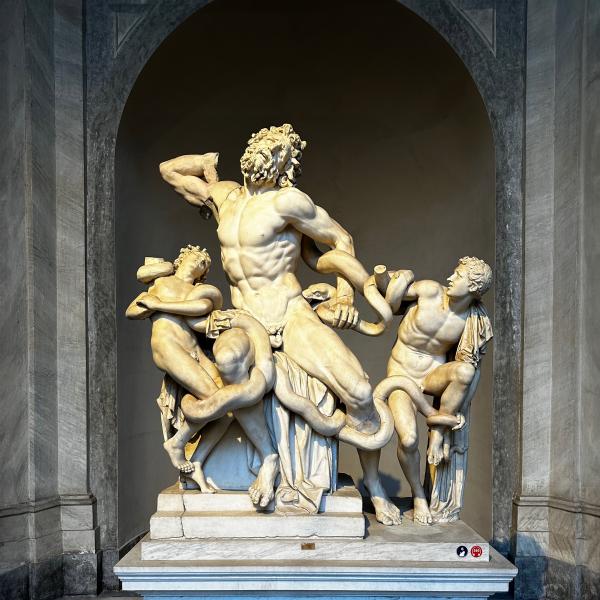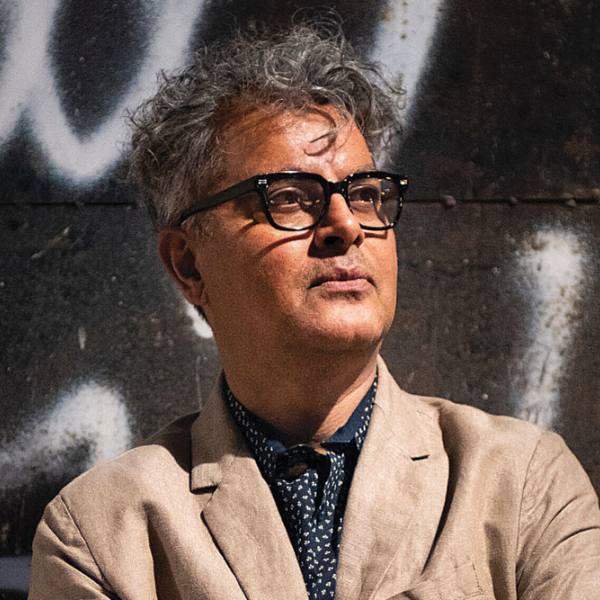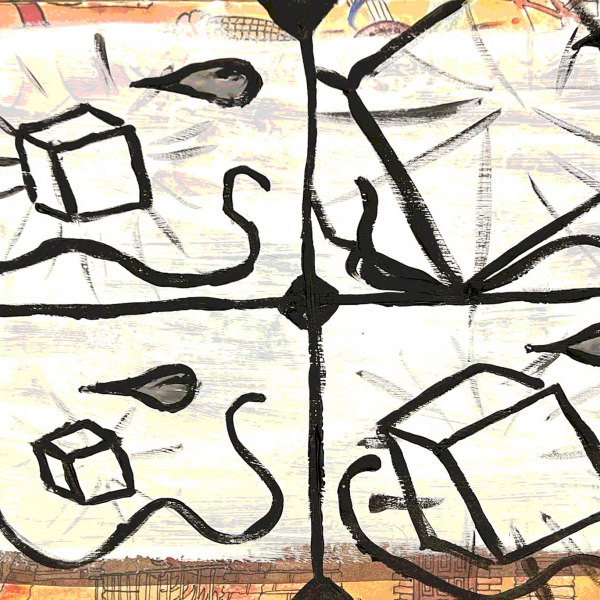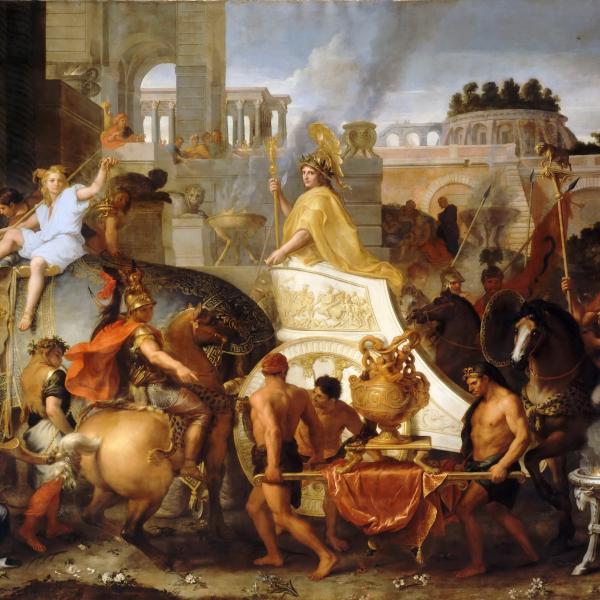by Elizabeth C. Childs
Chair, Department of Art History and Archaeology
Etta & Mark Steinberg Professor of Art History
This spring something distinctive and new in the arts is happening on campus. The Department of Art History and Archaeology is offering for the first time a seminar in the field of African arts. This course, open to graduate students and undergraduates alike, is a wide-ranging foray into current thinking about art and material culture from a number of West and Central African cultures, notably in Mali, Ivory Coast, Burkina Faso, Benin and Nigeria. The course, designed as an intimate seminar, will be exceptional in four ways. Students will:
· work directly with examples of art drawn from the Saint Louis Art Museum and will have unprecedented access to many materials usually kept in storage;
· learn from a team of distinguished scholars who are organizing ground-breaking exhibitions in the areas of Kota and Senufo art;
· be exposed to cutting-edge museological techniques in the digital humanities for evaluating a large and diverse corpus of objects; and
· talk with collectors and curators about the meanings these art works have developed in a variety of cultural contexts.
The course is thus a unique opportunity for students with a broad range of interests — not just in art history and studio art, but also in history, African and African-American studies, anthropology and museum studies. The course is also a landmark teaching collaboration between the Department of Art History and two local arts institutions: the Saint Louis Art Museum (SLAM) and the Pulitzer Foundation for the Arts. We hope it will become a leading example of what we can do together in the future.
 The course, African Art: A User’s Guide, is timed to coincide with the co-instructors’ final preparation for two exhibitions, which students will be able to visit. In June 2015, Senufo: Art and Identity in West Africa will open at SLAM, featuring some 160 objects from northern Ivory Coast, Mali and Burkina Faso. The curator of the show, and co-instructor of the course, is Nichole Bridges, PhD, who came to St. Louis just over a year ago to become curator in charge of SLAM’s Department of the Arts of Africa, Oceania and the Americas. Bridges holds a doctorate in African art history from the University of Wisconsin, Madison, and is a specialist in ivory carvings of the west African coast. She has been a curator at the Baltimore Museum of Art and has taught at Johns Hopkins. This is her first opportunity to teach at Washington University.
The course, African Art: A User’s Guide, is timed to coincide with the co-instructors’ final preparation for two exhibitions, which students will be able to visit. In June 2015, Senufo: Art and Identity in West Africa will open at SLAM, featuring some 160 objects from northern Ivory Coast, Mali and Burkina Faso. The curator of the show, and co-instructor of the course, is Nichole Bridges, PhD, who came to St. Louis just over a year ago to become curator in charge of SLAM’s Department of the Arts of Africa, Oceania and the Americas. Bridges holds a doctorate in African art history from the University of Wisconsin, Madison, and is a specialist in ivory carvings of the west African coast. She has been a curator at the Baltimore Museum of Art and has taught at Johns Hopkins. This is her first opportunity to teach at Washington University.
The second co-instructor is Kristina Van Dyke, PhD, director of the Pulitzer Arts Foundation in St. Louis. This is her second semester teaching a seminar in the department (and possibly her last, as she moves from St. Louis this summer). Her exhibition, Kota: Digital Excavations in African Art, opens in October 2015 at the Pulitzer, which is more an experimental lab for displaying visual arts than a traditional museum. The Pulitzer exhibit will not only showcase dozens of fine Kota guardian figures from Central Africa (most of which will be on loan from European museums and private collections), it will introduce viewers to a digital database that charts the development of certain African styles through diverse regions. The use of this technology in the exhibition to engage viewers in evaluating complex groups of objects is but one innovation in exhibition practice that students will learn about in the seminar. Van Dyke, who earned her PhD in African art history from Harvard, was responsible last fall for the first installation of African Art at the newly renovated, spectacular Fogg Art Museum at Harvard. This combination of experiences makes her uniquely qualified to introduce Washington University students to the fascinating considerations of form, meaning and materials raised by working with a corpus of exceptional Kota reliquaries.
The Department of Art History has in recent years made strong efforts to introduce our students to powerful non-Western art traditions, including the art of Islam, of Buddhist Tibet, and in this current year, the arts of Oceania and the Pacific Islands. African Art: A User’s Guide is a further effort to expand our students’ awareness of the richness and diversity of artistic traditions outside of the more frequently studied European and American traditions.
But this course does more than change the map of the curriculum — students will have a chance to work with leading experts to study local collections that have not previously been open to Washington U. students. Moreover, Bridges and Van Dyke will give students not only a keen understanding of how and why this art was created in its West and Central African context, but also a cross-cultural understanding of the multiple meanings the objects accrued as they left their place of origin.
 The course will focus on the cultural significance of collections, and on the diverse meanings objects assume as they enter different institutions (art, anthropological) and assume different kinds of status (curiosity, artifact, sculpture) at different moments in time. Students will meet with collectors and learn what messages these pieces embody about African culture, and how those messages are perceived and circulated by contemporary American audiences. Students will thus be invited to think about African objects both synchronically and diachronically, and to consider how African studies has applications beyond the academic world. It is our hope that this rich, interdisciplinary seminar will be the first of many at Washington U. to be devoted to the study of African arts and the arts of the African diaspora.
The course will focus on the cultural significance of collections, and on the diverse meanings objects assume as they enter different institutions (art, anthropological) and assume different kinds of status (curiosity, artifact, sculpture) at different moments in time. Students will meet with collectors and learn what messages these pieces embody about African culture, and how those messages are perceived and circulated by contemporary American audiences. Students will thus be invited to think about African objects both synchronically and diachronically, and to consider how African studies has applications beyond the academic world. It is our hope that this rich, interdisciplinary seminar will be the first of many at Washington U. to be devoted to the study of African arts and the arts of the African diaspora.
This course (L01 4103) has no pre-requisite, and no foreign language requirement to enroll in this course; students of all levels welcome. Classes meet Wednesdays 4–7 pm alternatively on campus and at SLAM. Students may register on Webstac, or send inquires about the course to Liz Childs, Chair and Etta and Mark Steinberg Professor of Art History, at ecchilds@wustl.edu.




